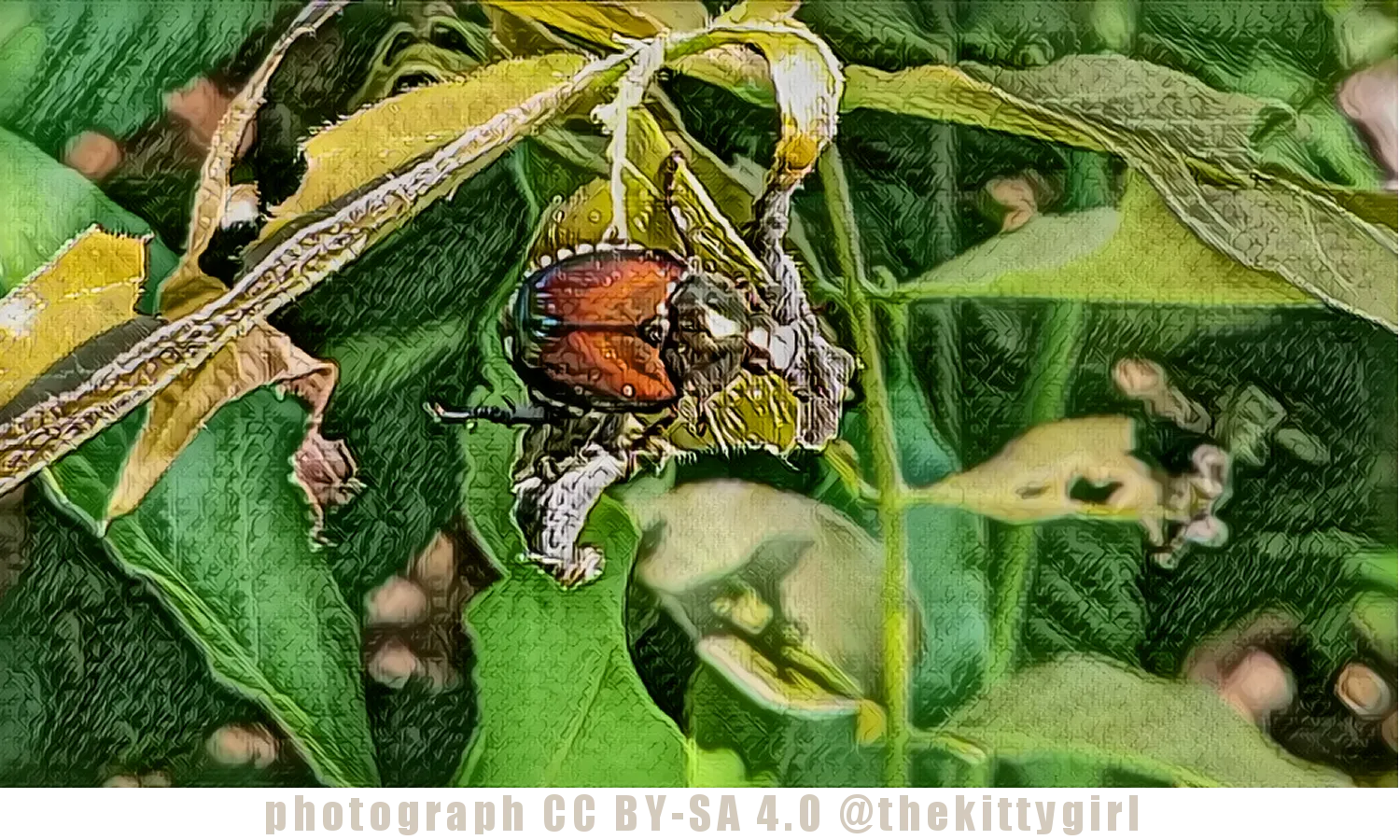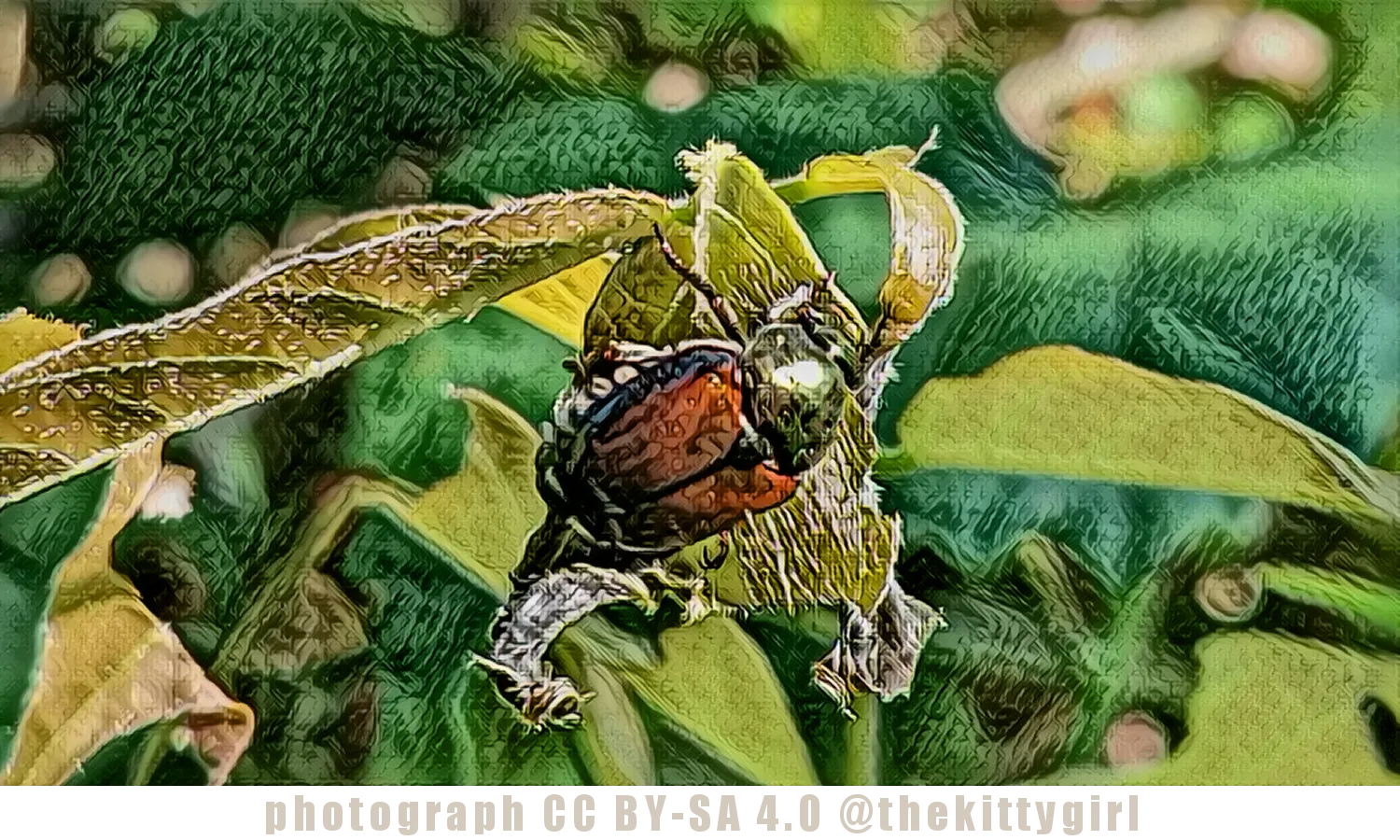In the early 1900s, some little dudes (and dudettes!) stowed-away aboard a freighter in Japan carrying cargo. They sailed across the oceans, experiencing much adventure along the way. When the ship docked in New Jersey, they hopped off and made their home in the New World. Since arriving, they have had countless generations of bug-children, as well as grandbugs, great-grandbugs, and so on, and so on, and...
Since arriving, the Japanese Beetle (Popillia japonica) has spread in a prolific manner to virtually every reach of the North American continent. Yet, it is a pretty beetle: the head and upper body are an iridescent green, and the elytra (which covers & protects the wings when not in use) are a lovely coppery-red. Little tufts of whitish hairs peek out at intervals around the insect's abdomen.

The problem with the spread of the beetle is twofold: (1) it has a voracious appetite for its size, and (2) it is not very discriminatory about what it eats. If there are roses, hydrangea, and other common garden plants around, the beetle will definitely head towards them. They will eat lawn grass, leaving brown patches here-and-there. They enjoy Crepe Myrtle trees and will eat many plans, such as beans, that are grown in gardens. Not only will they eat the flowers, but they will eat the leaves until they are nothing more than skeletons, thus killing the plants.
The state of California's Department of Food and Agriculture reports, regarding the distribution of the insect, that:
The beetle is currently found in coastal and adjacent states from Maine to Alabama with small infestations westward to beyond the Mississippi River.
However, the Departments of Agriculture in Colorado, Kansas, Minnesota, and other states have reported the insects as a problematic and invasive species. One of my sources, InsectIdentification.org, includes all 50 US states, Mexico, and all of Canada except Nunavut, Yukon, and Northwest Territories with the range of the beetle.
The insects have wings and can definitely fly. But, part of the problem with their spreading is the Japanese Beetles pupate underground, buried just beneath the topsoil. If a plant is dug to be transplanted, it is easy for pupae to be transported, too. And if you dig a plant from your yard in Virginia and then take it to Aunt Bessie in Ohio, then she might have Japanese Beetles arise from your gift. Plants that are purchased from nurseries that do not locally-source their plants could also contribute to the spread, unless they treat their plants or quarantine them in a special greenhouse until they are sure the plants are free of pests. In fact, it is suspected that the beetles were in pupae form when they were unknowingly transported from Japan to New Jersey, over a century ago in an agricultural shipment.

For a very interesting article about getting rid of these pests, check out the following from the COLORADO SUN:
How a small Colorado town fought the Japanese beetle and won
SOURCES 1 EncyclopaediaBritannica.com: Japanese Beetle 2 California Department of Food and Agriculture: Japanese Beetle Pest Profile 3 InsectIdentification.org: Japanese Beetle (Popillia japonica)




to learn more about either of these projects, please visit: @heyhaveyamet or @theterminal
23-Jun-2020
Return from Japanese Beetle to 𝕜𝕚𝕥𝕥𝕪's Web3 Blog

